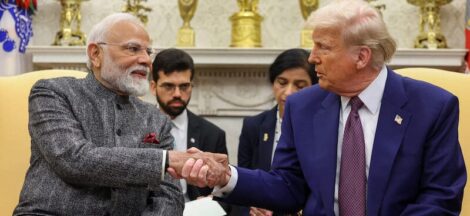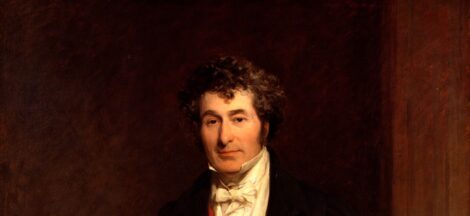Prime Minister Narendra Modi has placed India in a very advantageous position vis a vis Pakistan in the limited war that lasted for four days beginning early hours of May 7. The ceasefire that took effect from 5 PM of May 10 was more engineered by desperate Pakistan which hoodwinked the US through misleading information circulated in diplomatic circles on May 8 and 9 that the National Security Group on nuclear weapons would be having an emergency meeting to decide on retaliation after India’s attacks on some army bases causing big losses to Pakistan.
This immediately pressed panic button in US establishment and President Trump was reported to have instructed his vice president J D Vance and state secretary Marco Rubio to organize ceasefire within 24 hours, through the policy of carrot and stick against both the involved powers. Pakistan Prime Minister Shehbaz Sharif was in high spirits on May 10 morning as the efforts were going on at top speed in both Islamabad and New Delhi. His officials did as directed by the U.S. top brass and in a few hours preceding 3.35 PM meeting by the DGMOs of India and Pakistan, the U.S. secured the nodding from the reluctant India as the Prime Minister who is the principal decision maker, could not afford to defy the strong message which came from his dear friend Donald.
This much is fine. The ceasefire has taken place and it is a big relief for the common people of the two countries. Pakistan Prime Minister Shehbaz Sharif has saved himself from his bad political fortunes if the war continued. The Pakistan political parties are also happy that India could not do much to destroy Pakistan’s bases. They were afraid something far more destructive would happen. Pakistan Army Chief Asim Munir with whom Marc Rubio talked, felt safe as his assent given to Rubio gave him some political advantage in safeguarding his position. Munir is under scanner at the U.S. establishment for some of his earlier actions in the country.
The Pakistan leaders have all welcomed Trump’s statement on May 10. They are all anxiously waiting for his next action on mediating between India and Pakistan on the Kashmir issue, which, according to Trump is major issue responsible for the armed conflict between the two nations from time to time. India consistently refused to allow any third party mediation by any country including USA. Now in the backdrop of the latest ceasefire, what will be the Indian position?
Herein comes the dilemma of the Narendra Modi government. After powerfully establishing supremacy in the skies of Pakistan and damaging the rival’s air defence system substantially, the BJP led government ministers, especially the Prime Minister are not that ebullient. The U.S. pressure to agree to immediate ceasefire was too heavy and the present mood in Washington indicated that the White House would keep monitoring the India Pakistan negotiations currently on. Further President Trump will really like to emerge as a peacemaker on Kashmir issue.
Indian officials have not agreed to the US mediation claim, they are saying that it was India’s own decision to respond to Pakistan’s request. But it was known till May 10 morning that the strikes would continue, then why this sudden decision on ceasefire in the afternoon? The Congress MP Shashi Tharoor who has recently turned as band master of the Prime Minister Narendra Modi in the recent days after Pahalgam massacre on April 22, said that this was no mediation, it was only part of U.S. efforts at playing constructive role. Further he said that he had not seen anything like Trump’s claim in international diplomacy. Tharoor is a former UN diplomat and also former state minister of external affairs in the UPA government. He should know that international diplomacy has changed substantially in the Trump era and it was not new for the maverick president to sometimes resort to some exaggerated claim. But essentially, it was US which finally persuaded India to agree to ceasefire as desired by the Pakistan. Tharoor may call it in whatever way he wants, but it was the US and US only which acted fiercely on May 9 night and early hours of May 10 to bring about the ceasefire.
Then what next? Prime Minister Narendra Modi has not so far responded to Trump’s claim on U.S. organizing the “full and immediate ceasefire”, but he must have taken note of tweet of Marco Rubio in taking US interest in the negotiations on other issues which will be on now. Even if Trump does not pursue the talks on Kashmir under the US mediation, Indian positions in the coming negotiations with Pakistan will always be under scrutiny by the White House. Officially, the India-Pakistan’s latest conflict has not been internationalized, but defacto, the Trump regime has pushed itself into the Indo-Pak theatre despite India’s opposition.
Prime Minister Narendra Modi has played his cards intelligently by putting the Indian reprisals as the part of the fight against the terrorist camps and not against Pakistan military. India will have to ensure that its officials independently deal with the Pakistani officials in bilateral negotiations. Further, the U.S. establishment must be told in unequivocal language that India will not allow any mediation by Trump. If the Prime Minister Narendra Modi can take this position and come out of the present situation by achieving fully his objective of destroying terror camps in Pakistan, he will be back as a winner getting out of the trap laid out by his friend.
PM has to ensure that the unprecedented unity of the minority community behind the actions of his government is maintained and the gains are not lost by the fringe elements of Sangh Parivar. This is the time to take a close look at the foreign policy pursued by the Modi government in the last eleven years and to take corrective measures, if needed. Many lessons are there for India from this four day short conflict between the two neighbours. Hope both the NDA government as also the ruling Party take those lessons in proper perspective. (IPA Service)




 Strategic Shift in Counter-Terrorism Doctrine: Modi
Strategic Shift in Counter-Terrorism Doctrine: Modi 